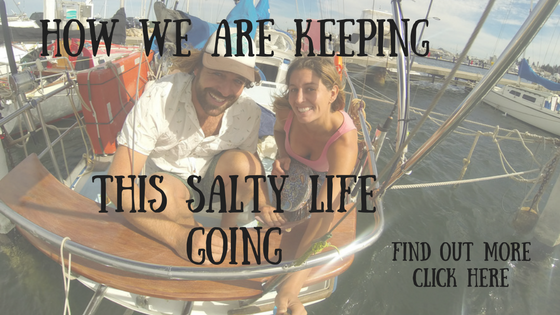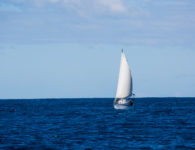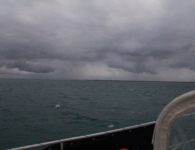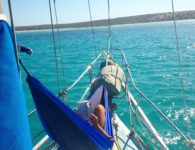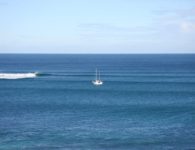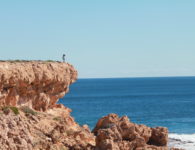Sebastian and I have been on a journey for quite a while to lighten our footprint on the planet and to actively try and do what we can to help protect the planet. It’s a continual process of trying to do more.
We fly a lot for work and it means our carbon footprint gets larger, even though we are doing as much as we can to reduce it in other areas of our lives.

I’d like to get to the point with this post, but I must explain something first. The reason for my need to explain is that many people have written off carbon offsetting in the last number of years. The criticism is that if you justify your lifestyle with carbon offsets, then it just gives you a guilt-free ticket to keep on living the exact same way you always have.
What needs to happen is we (as in everyone) needs to reduce our impact on this Earth in significant ways. For the emissions we do emit, we need to reduce these before we turn to carbon offsetting.
This, I 100% agree with.
So if you’d like to read about the ways in which Base and I have tried to keep making headway towards lightening our impact on the Earth – you can read all about it here. We fit it into another post to get to the point on offsetting.
What it comes down to is that we have a big weight on our shoulders and it feels like crap. In a world where we know we need to be reducing our emissions, Base and I fly way too much. It’s not for personal travel, we go sailing for that. It is for our Job.

Now to justify our job…well let’s start with the fact it’s a dream job for both of us, not to mention we get to work together. We started in the Kimberley as Expedition Guides. It was fantastic. In working with our company has enables us to start traveling the world as expedition guides on small expedition ships. The ship has electric engines which is a bonus, but they do have quite a way to go to become more environmental overall.
What do we do on the ship? We take people into wild and rugged places via the ship and then in smaller zodiacs and the passengers get to connect to the natural world and remote cultures. We explore, and seek out wildlife, share about the ecosystem and help people appreciate the natural beauty of our planet. We also get an amazing opportunity to educate. We give lectures to up to 200 people and speak on everything from Geology, to Conservation and Plastic Pollution and Climate Change to an audience that is ready to listen. This is what keeps us in the job. We get to communicate about things that matter and hopefully inspire people to act.

Over the last year we took 9 flights to 5 countries to meet the ship – it is far too many flights to feel good about. I used this carbon calculator to assess the flights and how much CO2e has been emitted due to our two tickets. It equated to 6.8 metric tons of CO2e. (CO2e stands for not just CO2 but equivalents like other heat inducing chemicals like Methane and NO2)
After calculating our CO2e from flights I then went into research mode to learn as much as I could about Carbon Offsetting. It used to be all about planting trees but now it’s much more than that.
Here is my summary:
- Choose offsets carefully. The $2 added on to each flight by the airlines doesn’t quite cut it.
- Buy offsets that you can be assured that your purchase is resulting in a net benefit for the climate. (If trees get planted but then get chopped down – there is no net benefit).
- Buy offsets in projects that encourage a shift away from fossil-fuel use and carry inherently low environmental risks.
- Ensure the offsets you buy are verified by third party.
- Buy offsets that have a global certification.
With these points considered, I came across ‘Gold Standard’ Offsets. Over 80 NGO’s around the world have vetted the regulatory framework of Gold Standard Offsetting. Buying offsets through them, means you have third party verification and that every offset is accounted for, so you know the money you gives goes specifically to projects that prevent emissions from entering our atmosphere.
Here is what we supported to offset our year of flights in 2018:
More Efficient Cooking and Heating in China (learn more here)

and

A 100 MW Wind Power Project in Andhra Pradesh – India (Learn more here)
Both projects are positively impacting local communities and preventing further emissions from entering our atmosphere.
Does it erase the impacts of our flights? No.
Does it make us feel better? Yes.
What it does for us is show that we can invest in positive projects that we need to support to transition away from a fossil fuel
We live on a Sailboat, We try our best to reduce our footprint wherever we can. We fly and will be flying more for work this year. We plan on countering our flights this year with more offsets. We can do this and we feel better doing this.

Oh and also it doesn’t break the bank. We paid $80 US dollars to offset both of our flights from 2018 that were equivalent to 6 Tonnes of CO2e.
Are you dubious about Offsets? I was too.
But when I looked into it, I found a way to offset my travels that aligns with my values and helps us move to a more sustainable world. If you’re a taking a flight this year, why don’t you give it a go?
Thanks for reading.
Xx
Jamie
Learn more about our adventures on the ship or how we keep the Salty Life Afloat.



